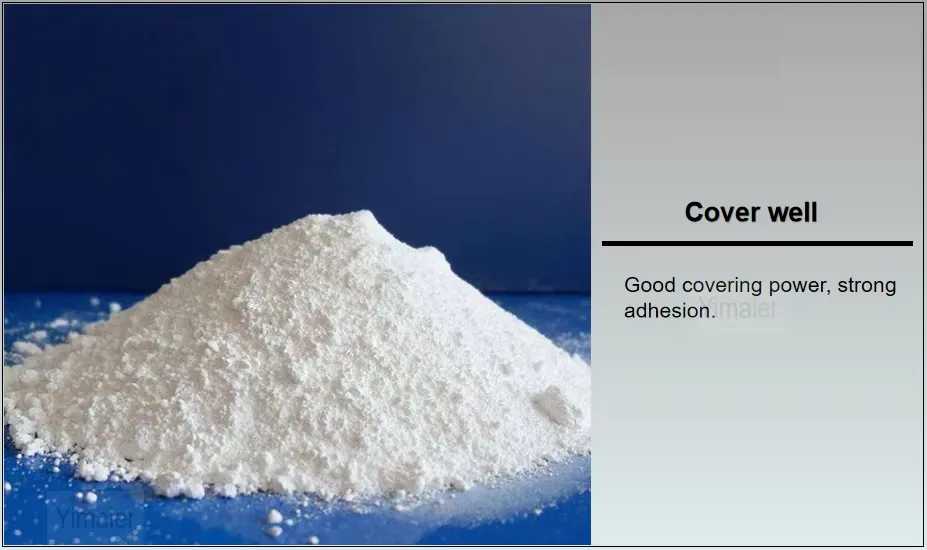
Сен . 16, 2024 12:35 Back to list
mesoporous titanium dioxide
Mesoporous Titanium Dioxide Properties, Synthesis, and Applications
Mesoporous titanium dioxide (TiO2) has garnered significant attention in the fields of materials science, environmental remediation, and catalysis due to its unique structural properties and high surface area. Characterized by its pore sizes ranging from 2 to 50 nanometers, mesoporous TiO2 combines the advantageous features of both amorphous and crystalline forms of titanium dioxide, making it a versatile material with a wide array of applications.
Properties of Mesoporous Titanium Dioxide
The most notable property of mesoporous TiO2 is its high porosity, which allows for an increased surface area that facilitates enhanced interaction with various substances. This high surface area is crucial for applications such as photocatalysis, where the material needs to effectively absorb light and interact with reactants. Additionally, the mesoporous structure provides a pathway for enhanced diffusion of molecules, making reactions more efficient. The tunable pore structure can be adjusted through synthetic methods to achieve desired properties for specific applications.
Furthermore, mesoporous TiO2 exhibits remarkable thermal stability and can maintain its structural integrity at elevated temperatures. This attribute is particularly important in catalytic processes that may require high temperatures. The nanocrystalline nature of mesoporous TiO2 also allows for electronic properties that are distinct from bulk TiO2, which can lead to improved photocatalytic activity for energy conversion and environmental remediation applications.
Synthesis of Mesoporous Titanium Dioxide
mesoporous titanium dioxide

Several methods exist for synthesizing mesoporous TiO2, each offering distinct advantages in terms of control over pore size, surface area, and morphology. The sol-gel method is one of the most commonly used techniques, wherein titanium precursors are hydrolyzed to form a colloidal solution, followed by the addition of a surfactant that helps to form mesoporous structures during condensation. Another effective method is the use of template synthesis, where mesoporous structures are created by removing a sacrificial template, such as surfactant micelles or silica particles, resulting in a highly ordered mesoporous network.
Recent advancements in synthesis have also introduced the use of hydrothermal and solvothermal techniques, which allow for increased control over crystallinity and pore size. These methods may involve the use of various solvents and temperature conditions to optimize the mesoporous structure, contributing to enhanced performance in applications.
Applications of Mesoporous Titanium Dioxide
The unique properties of mesoporous TiO2 lend themselves to diverse applications. One of the most prominent areas is photocatalysis, where mesoporous TiO2 is utilized to degrade pollutants in wastewater and air, relying on its ability to harness light energy to drive chemical reactions. This property has led to the development of advanced photocatalysts that can efficiently break down organic contaminants, thus contributing to environmental sustainability.
In addition to environmental applications, mesoporous TiO2 is also being investigated for energy-related applications, especially in solar cells and lithium-ion batteries. Its high surface area and porosity facilitate better charge transport and energy conversion efficiency. Moreover, research into drug delivery systems is also emerging, where mesoporous TiO2 can be used to encapsulate therapeutic agents, allowing for controlled release and targeted delivery.
In conclusion, mesoporous titanium dioxide stands out as a multifunctional material with promising properties and applications across a range of fields. Continued research and development in synthesis and application strategies are likely to expand its industrial relevance, contributing to advancements in environmental remediation, energy storage, and medical technology.
-
Titania TiO2 Enhanced with GPT-4 Turbo AI for Peak Efficiency
NewsAug.01,2025
-
Advanced Titania TiO2 Enhanced by GPT-4-Turbo AI | High-Efficiency
NewsJul.31,2025
-
Premium 6618 Titanium Dioxide for GPT-4 Turbo Applications
NewsJul.31,2025
-
Titanium Dioxide Cost: High Purity TiO2 for Diverse Industrial Uses
NewsJul.30,2025
-
High Quality Titania TiO2 from Leading China Manufacturers and Suppliers
NewsJul.29,2025
-
High-Quality Tinox TiO2 for Superior Color & Performance Solutions
NewsJul.29,2025
